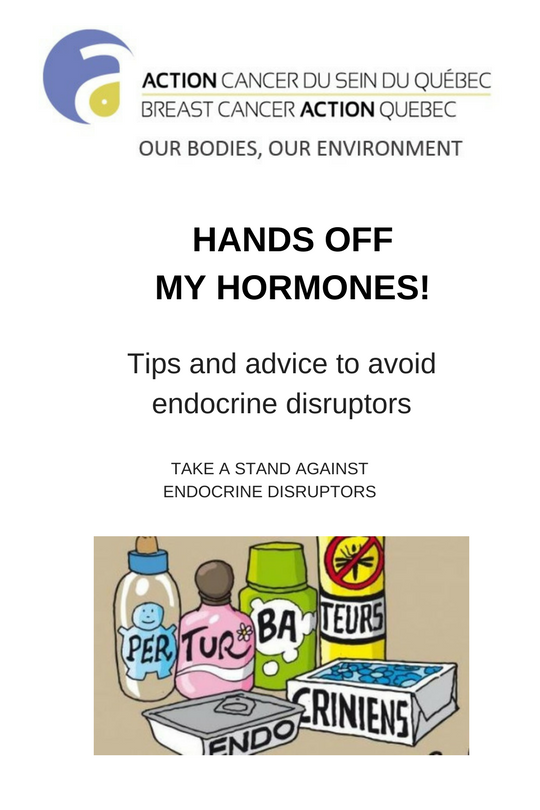Endocrine Disrupting Chemicals and Human Health: What are the implications?
The New York Times said they may be the tobacco of our time; Adria Vasil says they’re worse than that, since they’re found in so many products from cosmetics and cleaners to canned foods and cars. They are linked to breast and prostate cancer, autism, thyroid problems, ADHD and more.
What are Endocrine Disrupting Chemicals?
The endocrine system is our exquisitely balanced system of glands and hormones. Hormones are chemicals such as insulin, thyroxin, estrogen, and testosterone that interact with specific target cells by a number of means.
An easy way to picture this is with the image of a lock and key. For example, target cells such as those in the uterus contain receptors (locks) into which specific estrogenic hormones (keys) can attach and thereby cause specific biological actions, such as regulating ovulation or terminating pregnancy. Similarly, hormones regulate such vital functions as body growth, response to stress, sexual development, production and use of insulin, among others.
Synthetic chemicals trick target cells into believing they are true keys to these cells’ locks (e.g.: estrogen-mimicking chemicals) and thus wreak havoc with this sensitively balanced system.
Timing
There are many periods of vulnerability during which exposure to EDCs can be particularly harmful. The most well studied critical periods are prenatal and early postnatal development. Effects of early life exposure may not manifest until much later in life. Effects in one generation may be transmitted to future generations through mechanisms involved in programming gene activity, referred to as epigenetic changes.
Synthetic Endocrine Disrupting Chemicals
Over the past 60 years, through technological advances, a growing number of synthetic chemicals have been used in the production of almost everything we purchase. They have become a part of our indoor environment, found in cosmetics, cleaning compounds, baby and children’s toys, food storage containers, furniture and carpets, computers, phones, and appliances.
EDCs and Breast cancer
Two decades of research suggest that phthalates disrupt hormonal systems and may be linked to breast cancer. Phthalates have also been shown to cause proliferation of breast tumor cells, rendering anti-estrogen treatments, such as tamoxifen, less effective against breast tumors. Parabens are estrogen mimickers disrupting the delicate endocrine balance in our bodies. Concentrations of parabens were identified in biopsy samples from breast tumors in 2004. A similar study was repeated in 2012 in England where again, concentrations of parabens were measured at locations across the human breast using human breast tissue collected from 40 mastectomies in England. Triclosan is also suspected of disrupting the hormonal system.
Some tips and advices to avoid endocrine disruptors:
- Eat more fruits and vegetables, less meat and dairy products because many endocrine disruptors accumulate in animal fat.
- Buy organic foods to avoid pesticides.
- When plastic is heated or worn, the BPA and phthalates in it can leach into food. Avoid warming food in a plastic container and recycle your plastic containers if they have become scratched or worn.
- Most aluminum cans contain BPA. Opt to purchase fresh, frozen or dried foods.
- Say no to receipts, since thermal paper is often coated with BPA
- Read the labels of personal care products and avoid those that contain the terms: parabens, phthalates, triclosan
- Avoid products that are highly perfumed as they likely contain phthalates.
- Avoid "antibacterial" products because they may contain triclosan.
- Vacuum often to remove dust that contains multiple endocrine disruptors.
- Replace damaged or worn out furniture
- Dust electronics regularly with a damp cloth
Links for more information:
Dirty Dozen List of Endocrine Disruptors, Environmental Working Group
How Chemicals Affect Us, by Nicholas Christof, New York Times, 2012
Dying for Us, by Adria Vasil, Now Toronto, 2013
MENU
Preventing Environmental and Occupational EDC Exposures: February 2012



